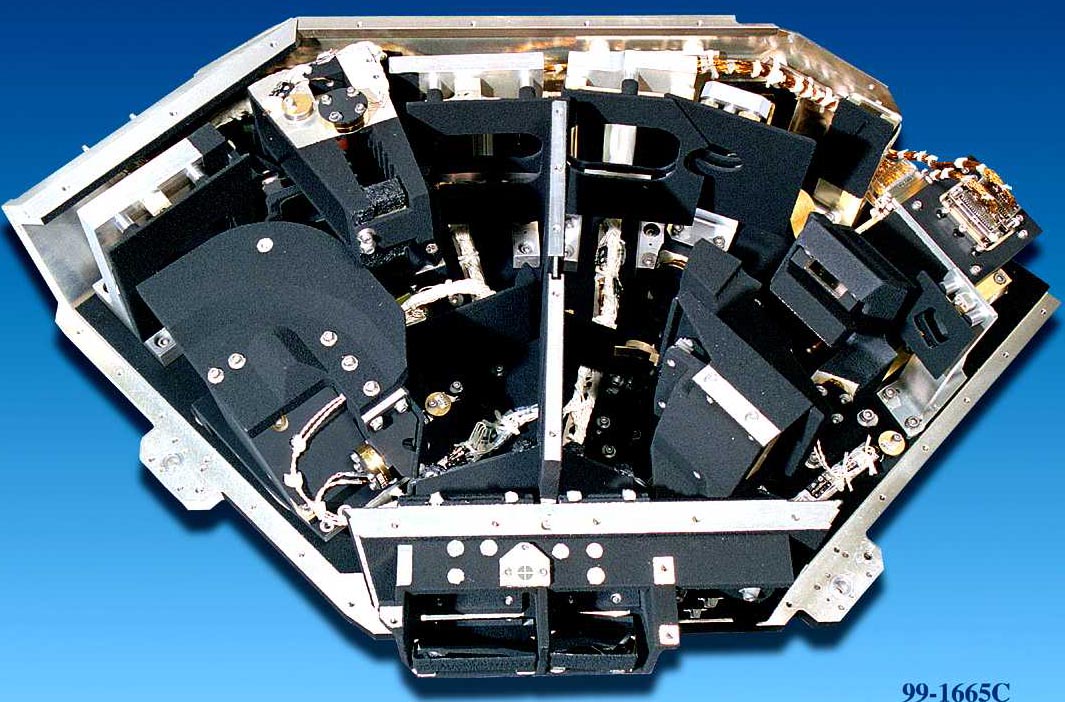
The Multiband Imaging Photometer for SIRTF (MIPS) is one of the three science instruments
in SIRTF. It is designed to provide very deep imaging and mapping at 24, 70, and 160
microns. In integrations of 2000 seconds, it will reach a 5-sigma detection limits at
these wavelengths of 0.2, 0.5, and 8 mJy, respectively (The latter one is limited by
confusion noise.) It will also measure low-resolution (R = 15-25) spectral energy
distributions between 50 and 100 microns.

The MIPS has three detector arrays: A 128x128 arsenic-doped silicon (Si:As) array,
identical to the IRS arrays, operating at a wavelength of 24 microns and with a 5
arc-minute field; a 32x32 gallium-doped germanium (Ge:Ga) array for 70 microns and a 5
arc-minute field; and a 2x20 Ge:Ga array, mechanically stressed to extend its
photoconductive response to 200 microns, and with a field of 0.5x5 arc-minutes. On-board
calibrators are provided for each array. Additionally, it has a scan mirror to provide
mapping with very efficient use of telescope time. The three arrays, calibrators,
scan mirror, and optics compose the cryogenic part of the MIPS. That is, these components
mounted as in the picture above are mounted inside the SIRTF cryostat and cooled by
superfluid liquid helium to a temperature of about 1.5K, 1.5 degrees above absolute zero,
or -457 degrees Fahrenheit.
In addition, the MIPS and the IRS share warm electronics that controls their operation.
The electronics communicate with the spacecraft computer, receiving commands for operating
the instrument and sending back science data and housekeeping information. The electronics
expands and carries out the detailed steps associated with commands from the spacecraft.
For example, it send control signals to operate the detector arrays, positions the MIPS
scan mirror, collects and amplifies the data, digitizes it, in the case of the 24 micron
array carries out the first step in analyzing it, and then puts it into packets that are
sent to the spacecraft computer. The spacecraft has the tasks of receiving blocks of
commands from the ground and storing them, and then sending them to the instrument
electronics at the correct time along with the coordinating commands to the spacecraft so
it is pointing in the right direction and ready to support taking science data. It also
stores the science data until there is an opportunity to send it to Earth.
More about the instrument is in this paper, while this one describes how we tested it.

